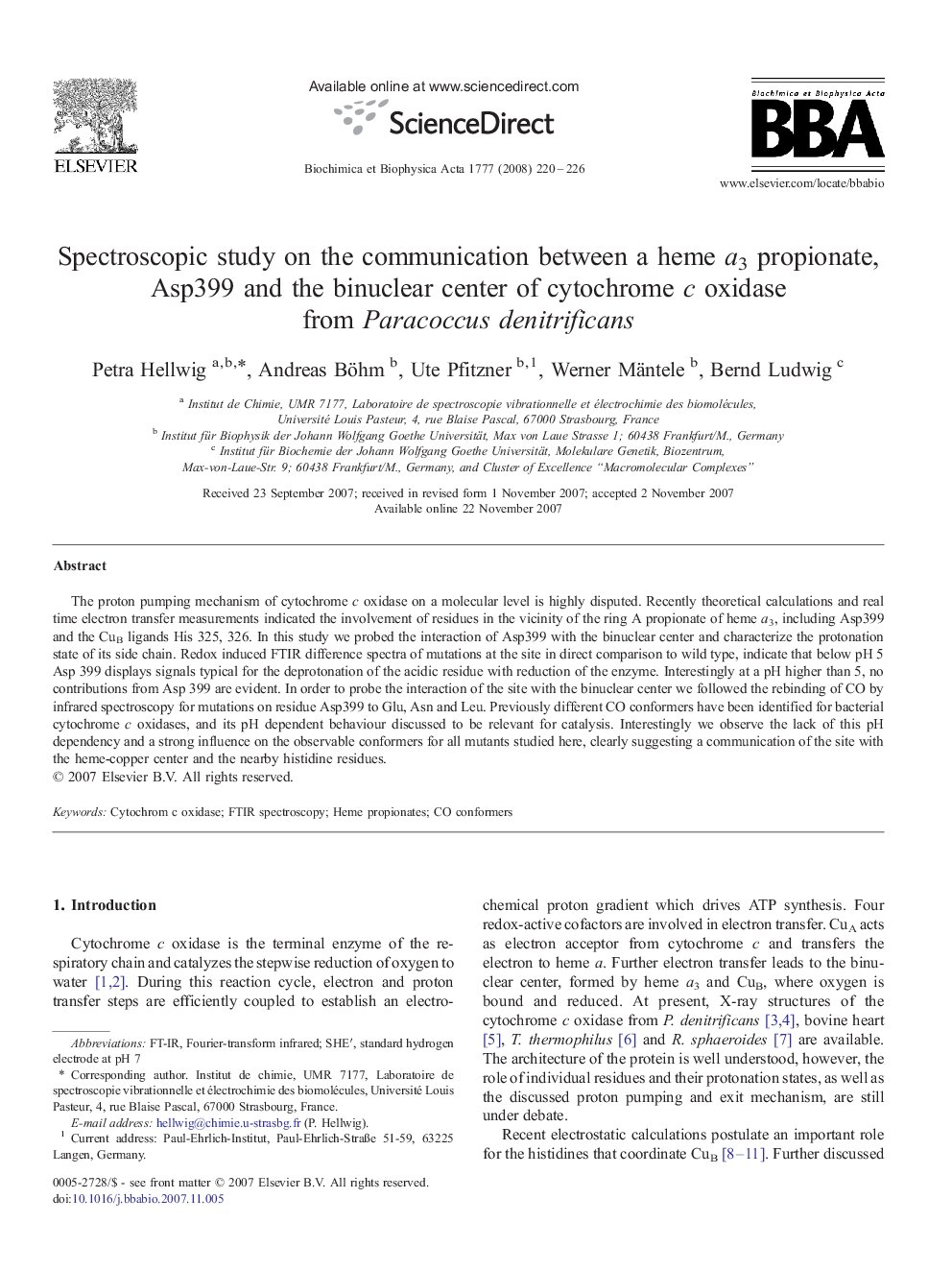| Article ID | Journal | Published Year | Pages | File Type |
|---|---|---|---|---|
| 1943423 | Biochimica et Biophysica Acta (BBA) - Bioenergetics | 2008 | 7 Pages |
The proton pumping mechanism of cytochrome c oxidase on a molecular level is highly disputed. Recently theoretical calculations and real time electron transfer measurements indicated the involvement of residues in the vicinity of the ring A propionate of heme a3, including Asp399 and the CuB ligands His 325, 326. In this study we probed the interaction of Asp399 with the binuclear center and characterize the protonation state of its side chain. Redox induced FTIR difference spectra of mutations at the site in direct comparison to wild type, indicate that below pH 5 Asp 399 displays signals typical for the deprotonation of the acidic residue with reduction of the enzyme. Interestingly at a pH higher than 5, no contributions from Asp 399 are evident. In order to probe the interaction of the site with the binuclear center we followed the rebinding of CO by infrared spectroscopy for mutations on residue Asp399 to Glu, Asn and Leu. Previously different CO conformers have been identified for bacterial cytochrome c oxidases, and its pH dependent behaviour discussed to be relevant for catalysis. Interestingly we observe the lack of this pH dependency and a strong influence on the observable conformers for all mutants studied here, clearly suggesting a communication of the site with the heme-copper center and the nearby histidine residues.
